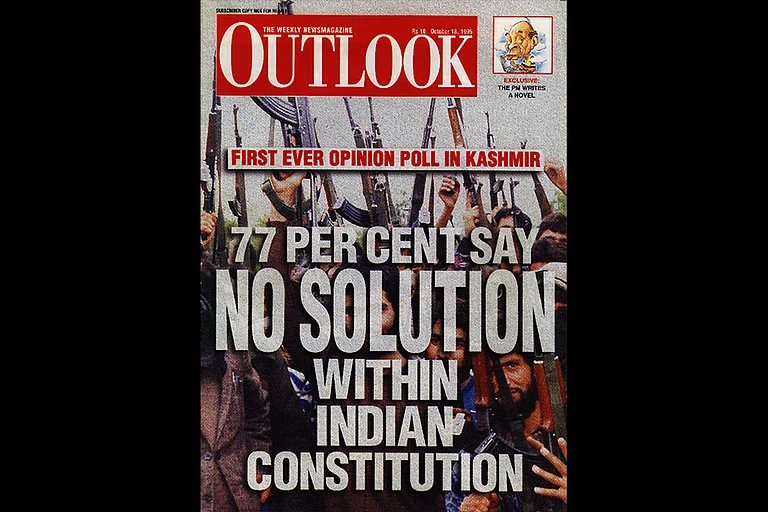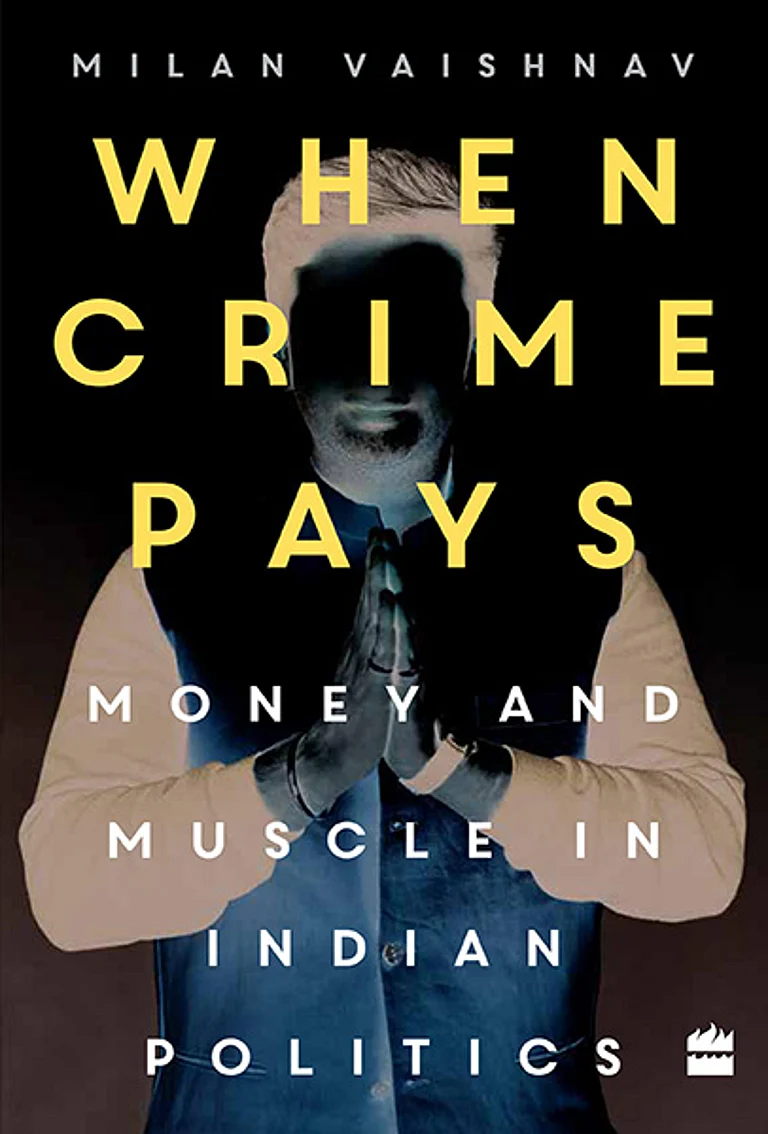This article was published in the Outlook magazine issue 'One Nation, One Election/One Nation, Many People' dated October 1, 2023. To read more article from the issue, click here.
“India, that is Bharat, shall be a Union of States”
These meticulously chosen, well-debated words of Article 1 of the Constitution represent, in essence, the foundational value of Indian federalism. However, since independence, the principle of federalism, as enshrined in the words ‘Union of States’, has been challenged many times in favour of an aggressive integrationist approach. Though B R Ambedkar, the chairperson of the drafting committee, was cautious while replacing the word ‘Federation’ with ‘Union’ to invoke the ‘indestructible’ unity among differences and diversity, his next generation compatriots started looking for the elusive ‘oneness’.
The journey of ‘oneness’ has been a long one—One Nation, One Tax, One Nation, One Ration Card, and the latest addition is One Nation, One Election (ONOE).
On September 2, 2023, the government formed an eight-member high-level committee headed by former President Ram Nath Kovind to examine the legal and procedural feasibility of simultaneous elections. The opposition parties came down heavily on the more alleging dismantling of federal principles. While CPI leader D Raja questioned the government’s unilateral decision, Rahul Gandhi tweeted that the idea of ONOE is “an attack on the Union and all its states”. AIMIM leader Asaduddin Owaisi termed it a “disaster for multiparty parliamentary democracy & federalism.”
This is not the first time that the idea of ONOE has been floated. In 1999, the Law Commission, led by B P Jeevan Reddy, recommended simultaneous elections. In 2015, a parliamentary standing committee reintroduced the recommendations and on August 30, 2018, the law commission, chaired by Justice B S Chauhan, released the draft report recommending simultaneous elections.
Echoing arguments made by political proponents of ONOE, the law commission cited four reasons to conduct simultaneous elections—cost saving, reducing the burden on the administrative set-up and security forces, undeterred implementation of government policies that allegedly get hampered due to the model of code of conduct and to ensure that the administrative machinery engages more in developmental work instead of continuous electioneering. However, constitutional experts, federalism scholars and political leaders argue that these grounds are shaky and ONOE is an attempt to undermine the federal principles that form the bedrock of the basic structure of the Constitution.
Curtailing the Power of States
According to Article 174, the power to prorogate or dissolve a state assembly vests with the governor who acts after he receives a request from the chief minister. In the case of synchronised elections, the state assemblies will also have a fixed term. Will the CMs have the authority to dissolve state assemblies within the term, after ONOE is implemented? “In a parliamentary set-up, chief ministers have the power to dissolve an assembly. If the states lose this provision, the prerogative of dissolving an assembly will go to the PM, which will violate the basic principle of federalism,” explains Balveer Arora, the author of India’s Beleaguered Federalism: The Pluralist Challenge.
It has been a common practice among regional parties to opt for fresh elections to get a better mandate. “Given the fluidity of the party system in India and the instability of government(s) it entails, ONOE is likely to consolidate the power of the Centre vis-à-vis the state(s) as the former will be exclusively invested with the administrative prerogative to determine who runs the state government(s) in case of any fall or dismissal of state government(s),” says political scientist Kham Khan Suan Hausing.
Arghya Sengupta, legal scholar and research director at Vidhi Centre for Legal Policy, feels it is too early to discuss the operational features of ONOE. He, however, says: “If the power of dissolving the assembly vests with the Prime Minister, it will affect the basic structure of the Constitution.”
To avoid such a situation, a fixed term of five years can be given to both the Centre and the state and the power of dissolution must lie with the governor or the CM, says Sengupta. “If there is any mid-term dissolution, they should have the power to decide. If a new government is elected mid-term, the power of dissolution should remain with them for the remaining part of the fixed term,” he adds.
Undermining Regional Issues
Experts believe that ONOE may lead to regional issues getting undermined as national parties will ride on the back of national achievements to garner political support even at the state level.
“After the Bangladesh war, Indira Gandhi won the Lok Sabha elections and thought she could win over the state assemblies as well on the back of it. She called for state assembly elections and gained a formidable mandate. Though it was not one election, the dates were so close that they were almost in sync,” says Arora.
Pointing out how ONOE will overshadow regional issues, John Brittas, a CPI (M) MP from the Rajya Sabha says: “When we campaign for state, municipality and panchayat-level polls, we focus on developmental issues that concern specific localities, but ONOE will submerge local and state issues in the whirlpool of national concerns.”
He points out how issues like Balakot and Pulwama had a resounding impact on the outcome of the 2019 General Elections. “People didn’t discuss demonetisation, unemployment or poverty. When a high-voltage campaign is unleashed, people tend to bend towards that,” says Brittas.
The dominance of big issues during election campaigns is a result of the ‘charisma’ of national leaders that gives the poll the shape of a presidential campaign, note scholars. In this context, the MP says: “This is precisely because the BJP banks on the so-called ‘charisma’ of the Prime Minister. Whenever any state election takes place, the only mascot the BJP has is the Prime Minister. Since the Constitution doesn’t allow the presidential mode of governance, they thought it fit to bring in the presidential mode of campaign and this is the premise of ONOE.”
Praveen Rai from the Centre for the Study of Developing Society (CSDS), nonetheless, notes that the 2014 and 2019 national elections are a testimony that the ‘Modi wave’ did not have much of an impact as regional parties retained power in their states. “However, what impact a national wave will have on the panchayat and municipal elections in simultaneous elections is hard to predict at this moment,” he says.
Impact on Regional Parties
Research shows people tend to vote for bigger parties if elections are held simultaneously. A CSDS study shows that out of the 31 assembly elections that were held alongside Lok Sabha elections between 1989 and 2014, in 24 elections, the major political parties gained an almost similar proportion of votes in both the assembly and Lok Sabha seats.
Another study that analysed 2,600 assembly constituencies in 16 elections shows that in 77 per cent of the cases, people tend to vote for the same party in assembly and Lok Sabha if polls are held simultaneously. But the difference in choosing a party is as high as 61 per cent in non-simultaneous elections.
These studies indicate that there are formidable chances of a single party gaining hugely in both state and Lok Sabha elections if the votes are cast simultaneously.
But do people vote for the national party or for the regional party? “The question arrives whether they are voting for the national party or the regional party. The studies have shown that it depends on whichever election they think to be important. If there is a voter congruence to the national party, then it will make sure that one party gains in both the elections. But it could work the other way,” notes Sengupta.
Yamini Aiyar, the President of the Centre for Policy Research (CPR), highlights a major concern for the regional parties pertaining to their national relevance. “ONOE will give structural advantage to the national parties over the regional ones,” she says, adding: “Elections when are being held simultaneously, regional parties will not get a chance to form coalition to fight at the national level. So, at the state level, regional parties will have multi-party competition but curbing the possibility of them having a robust voice at the national level.”
Question of State Ratification
While the Opposition has reiterated that state ratification is necessary for the passage of ONOE, the government has asked the Kovind-led committee to look into its necessity. “The basis of the committee’s investigation is itself anti-federal. The government has asked the committee to look into whether ratification from 50 per cent of the states is necessary. Why ask such a question?” asks Brittas.
Notably, the Chauhan-led law commission had also recommended 50 per cent state ratification. Invoking the basic structure doctrine, Hausing notes: “Given that ONOE is likely to have direct bearing on federalism, ratification of 2/3rd of the states must be made mandatory as laid down by the Supreme Court in the Keshavananda Bharati Case, 1973.”
To implement ONOE by synchronising the functions of state assemblies and the Lok Sabha, certain Articles need to be amended, think scholars. These include Article 83 (duration of House), Article 85 (dissolution of the Lok Sabha), Article 172 (duration of state legislatures), Article 174 (dissolution of state legislatures), Article 356 (failure of constitutional machinery). Besides, the Representation of the People Act, 1950 and 1951 also need to be amended.
But is state ratification essential? “Constitutionally, for the mentioned articles, it’s not required. Simple majority of two houses when two-thirds of the members are present during voting is enough. However, as a matter of good political design, it is necessary that the states are brought on board,” he says.
Some experts also feel that ONOE may lead to increased cases of horse trading and corruption. “If you have a fixed term and given certain configurations you are falling short, the only alternative is to buy more legislators. That’s an incentive to horse trading,” says Arora.
There have been multiple instances of verdicts of people having been upended in several states through horse trading in recent times, says Brittas, adding: “This could happen even when simultaneous elections, that offer fixed terms to state governments, are held. If a stipulated time is assured, they can make themselves into a commodity.”
While federalism, as experts note, may end up becoming the biggest casualty of ONOE, Aiyar questions why the Kovind-led committee lacks state representation. “If the government is initiating a process that is fundamentally going to change the dynamics of elections for regional and state-level parties, it is within the norm of cooperative federalism that states be represented in the decision-making committee,” she says.
(This appeared in the print as 'States of States')



























